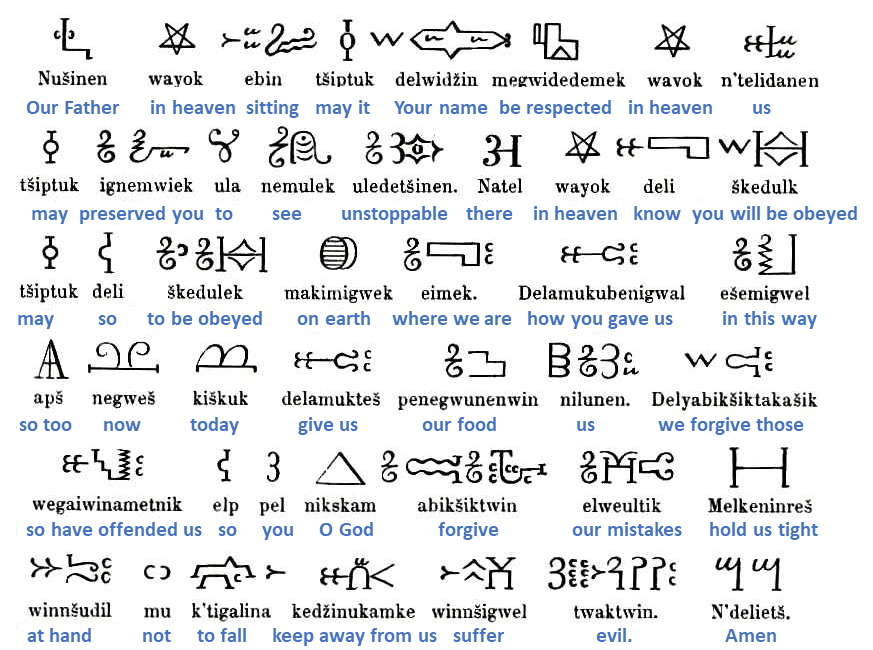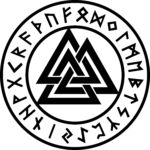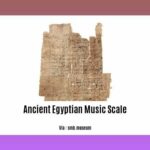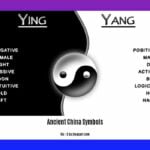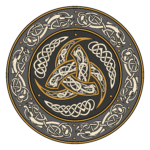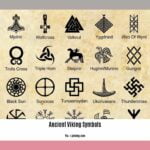While you might assume syllabic writing is a relic of the past, it’s surprisingly present in our modern world. While no languages today rely solely on syllabaries, where symbols represent whole syllables instead of just sounds, they haven’t vanished entirely. Let’s explore how these ancient writing systems have adapted and continue to thrive.
Decoding Syllabaries: Unveiling the Languages Written in Syllables
Think of syllabic writing like this: instead of writing every single sound you make when you speak, you have a symbol for chunks of sounds – syllables. For example, instead of “c,” “a,” “t,” you’d have a single symbol for “cat.” This approach reflects the natural rhythm of language and captures those spoken units, making it an intuitive writing system.
Let’s delve deeper into different aspects of syllabic writing:
What is a Syllabary?
A syllabary is a writing system where each symbol, unlike alphabets, represents a syllable—a unit of spoken language usually consisting of a vowel sound alone or a combination of a consonant and vowel. This approach captures the natural flow of speech, representing spoken units as distinct symbols.
Languages that Utilize Syllabic Writing:
- Extinct Languages:
- Mycenaean Greek: Deciphered in the 1950s, the Linear B script revealed the earliest form of Greek, written in a syllabary.
- Cretan Linear A: This undeciphered script from ancient Crete is suspected to be syllabic, but further research is needed.
- Modern Languages:
- Japanese: Uses a fascinating blend of two syllabaries, Hiragana and Katakana, along with logographic Kanji characters.
- Cherokee: Developed by Sequoyah in the 19th century, this syllabary boasts 85 symbols representing syllables in the Cherokee language.
- Vai: Spoken primarily in Liberia and Sierra Leone, Vai uses a unique syllabary invented in the 19th century.
- Yi Languages: A group of Sino-Tibetan languages spoken in eastern Asia, with several Yi languages using their own syllabaries.
- Ndyuka: This English-based creole language, spoken in Suriname and French Guiana, uses the Afaka syllabary.
- Xiangnan Tuhua: Spoken in Hunan province, China, Xiangnan Tuhua utilizes a syllabary for writing folk songs and poems.
Structure and Features of Syllabaries:
- Symbols: Each symbol corresponds to a specific syllable in the language. The number of symbols can range from dozens to hundreds, depending on the language’s syllable structure complexity.
- Organization: Syllabaries may be arranged systematically based on phonetic features, such as grouping syllables by vowel sounds.
- Complementary Use: Some languages, like Japanese, use syllabaries in conjunction with other writing systems, combining syllabic Hiragana and Katakana with logographic Kanji.
Advantages and Disadvantages of Syllabaries:
Advantages:
- Intuitive for Learners: Mastering a syllabary can be easier for beginners than alphabets because it aligns closely with spoken syllables.
- Efficient Representation: Syllabaries can represent words concisely, often using fewer symbols than alphabetic systems.
Disadvantages:
- Limited Symbol Set: Languages with complex syllable structures may require a vast number of symbols, complicating the writing system.
- Ambiguity: Syllabaries might not always accurately reflect subtle phonetic variations within a language, potentially leading to ambiguity.
A Blast from the Past: Syllabaries in History
Syllabic writing systems have a rich history, showcasing how humans have creatively captured and expressed language for centuries. Examples include:
- Ancient Scribes and Their Symbols: Some of the earliest writing systems, like Linear A and B from ancient Crete, the cuneiform script of Mesopotamia, and early forms of writing in India, were syllabic.
- Still Going Strong: Syllabic writing isn’t just a relic of the past. Languages like Japanese, Cherokee, and Vai still use syllabaries today, proving this system is as relevant and helpful as ever.
Syllabaries in the Digital World
You might think syllabic writing would struggle in the digital age, but that’s far from the truth. Syllabaries have successfully adapted and integrated into various digital platforms and fonts, ensuring they’re ready for the future of communication.
- Saving Languages, One Syllable at a Time: Syllabaries are valuable tools for revitalizing endangered languages. For example, the Cherokee language has significantly benefited from its syllabic writing system in revitalization efforts.
Why Syllabic Writing Systems Fit Some Languages Like a Glove (and Others Not So Much)
The suitability of a syllabic writing system hinges on a language’s sound organization. Syllabic writing thrives in languages with a limited and predictable syllable structure, where each character can reliably represent a distinct sound unit. However, they can become cumbersome in languages with complex consonant clusters or many possible syllables.
Think of it like having separate symbols for syllables like “cat” or “dog.” This works well for languages where these simple structures are common. But, languages with consonant clusters like “strength” in English or many vowel sounds would require a vast and potentially overwhelming syllabary.
However, even with this limitation, syllabaries offer valuable advantages:
- Efficiency: Compared to logographic systems, syllabaries have fewer characters to learn, making them more efficient.
- Intuitive Sound-to-Symbol Mapping: For languages with straightforward syllable structures, syllabaries provide a more intuitive sound-to-symbol mapping.
Outperforming Your Competitors: Which Modern Language Uses a Partially Syllabic Writing System?
Japanese and Korean take the spotlight when discussing modern languages using partially syllabic writing systems. These systems, blending syllabaries and logograms, offer a captivating glimpse into the evolution and diversity of written language.
I. Introduction to Writing Systems:
- Definition: Writing systems, at their core, serve to represent language in a visual form, enabling communication beyond the spoken word.
- Types: The main categories of writing systems include:
- Logographic (symbols represent words or morphemes)
- Syllabic (symbols represent syllables)
- Alphabetic (symbols represent individual sounds)
- Partially Syllabic Systems: These unique systems combine features of syllabic and other systems, often incorporating logograms.
II. Japanese Writing System:
- Key Components:
- Kana: The two syllabaries in Japanese writing. Hiragana is used for native words, while Katakana represents foreign words.
- Kanji: Borrowed from Chinese, these logograms represent whole words or morphemes, adding a layer of complexity to the writing system.
- Partially Syllabic Nature: Japanese writing masterfully blends kana and kanji. While kana characters represent syllables, kanji often represents entire words or concepts. For instance, the word “日本” (Japan) is written with two kanji characters, each representing a word. However, grammatical elements like verb endings are written in hiragana.
- Complexity and Nuances:
- Multiple Readings for Kanji: Depending on the context, a single kanji character can have different pronunciations (kunyomi and onyomi), adding another layer of complexity.
- Choice Between Kana and Kanji: The choice between using kana or kanji for a particular word can depend on various factors, including the context, the writer’s style, and the intended audience.
III. Korean Writing System (Hangul):
- Unique Structure:
- Featural: Unlike most other writing systems, Hangul’s glyphs, called jamo, visually represent how we articulate spoken sounds with our mouths.
- Syllabic Grouping: Jamo are not written individually but combine to form syllabic blocks.
- Logographic Elements: While primarily featural and syllabic, Hangul occasionally uses Hanja (Chinese characters), mostly in specialized contexts like academic texts or legal documents.
- Partially Syllabic Nature: Although Hangul is primarily featural and syllabic, its occasional incorporation of Hanja makes it partially logographic. This blend allows Korean to represent spoken sounds efficiently while drawing upon a rich vocabulary inherited from Chinese.
IV. Comparison and Contrast:
- Similarities: Both Japanese and Korean writing systems employ phonetic and semantic elements, creating a dynamic interplay between sound and meaning.
- Differences:
- Origins and Historical Development: Japanese writing evolved from Chinese characters, while Korean’s Hangul was a 15th-century invention.
- Degree of Logographic Influence: While both incorporate logograms, Japanese relies more heavily on kanji than Korean does on Hanja.
- Visual Representation of Writing Units: Japanese kana characters represent syllables, while Korean jamo represent individual sounds that combine to form syllables.
V. Significance and Conclusion:
- Linguistic Diversity: The partially syllabic systems of Japanese and Korean contribute to the rich tapestry of writing systems worldwide, showcasing the diverse ways humans have developed to represent language in written form.
- Cultural Insight: These writing systems reflect the unique history and cultural influences of Japan and Korea.
- Implications for Language Acquisition: Learning languages with partially syllabic scripts can be challenging but rewarding, offering a deeper understanding of the language’s structure and cultural context.
Conclusion
While often overshadowed by alphabetic systems, syllabic writing remains relevant and integral to various languages and cultures globally. From preserving endangered languages to adapting to the digital age, syllabaries demonstrate remarkable resilience. Their study offers valuable insights into the evolution of human communication and the diverse ways we make sense of the world through language.
If you want to learn more about the The ceramic figures above were created during the Neolithic period, make sure you click on the link, you will find plenty of useful information. Even if you are looking for more information about the Drawing signifying a Spartan formation, you should follow the link and let your curiosity be satisfied.
- Unlock Elemental 2 Secrets: Actionable Insights Now - April 2, 2025
- Lot’s Wife’s Name: Unveiling the Mystery of Sodom’s Fall - April 2, 2025
- Photocell Sensors: A Complete Guide for Selection and Implementation - April 2, 2025
